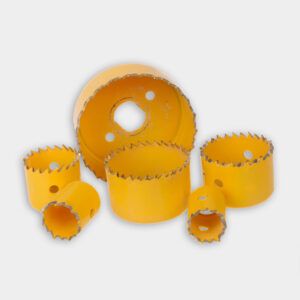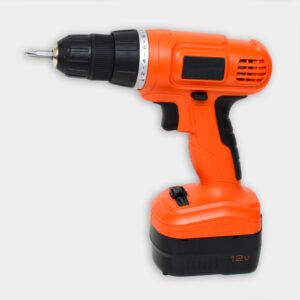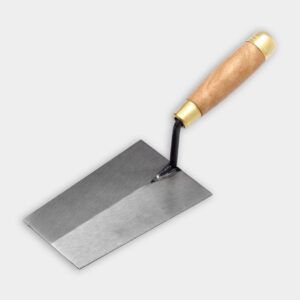We may be compensated if you purchase through links on our website. Our team is committed to delivering honest, objective, and independent reviews on home products and services.
Project details
Skill
Cost
Estimated TIME
Whether you’re fixing damage from electrical work or addressing a mishap, patching a textured ceiling yourself can save you time and money. In this guide, we’ll walk you through the process step-by-step. You can watch the video above to seeThis Old House painting expert Mauro Henrique complete a repair from start to finish.
What Are Common Textured Ceiling Types?
Textured ceilings can hide imperfections in the ceiling surface, provide sound absorption, and add visual interest to a room. They can also conceal future damage more easily. However, textured ceilings can be challenging to repair. The key to a successful patch lies in matching the existing texture seamlessly. There are several common types of ceiling textures:
- Popcorn texture: This rough, bumpy finish is often found in older homes. It’s applied using a special spray and can be challenging to clean.
- Orange peel texture: This is a slightly smoother texture resembling the skin of an orange. It’s often applied with a hopper gun and is easier to match.
- Knockdown texture: Knockdown is created by applying joint compound and “knocking it down” with a trowel. It results in a more subtle, elegant look.
- Swirl texture: This pattern involves creating circular swirls in the wet compound. It adds a decorative touch but requires skill to replicate.
- Stipple texture: This is achieved with a stippling brush or roller and adds depth and visual interest to your ceiling.
Materials and Tools Required To Patch a Hole in a Textured Ceiling
For this project, you’ll need these materials and tools:
- 1/2-inch drywall
- Hole saw or keyhole saw
- Joint compound
- Joint compound tray
- Drywall screws
- Drywall tape
- Margin trowel
- Paint (if needed for touch-ups)
- Sandpaper (optional)
- Screw gun
- Wood strapping
Steps To Patch a Hole in a Textured Ceiling
Follow these steps to patch your textured ceiling.
1. Cutting the Patch
Begin by measuring the size of the hole in your ceiling. Using a hole saw or keyhole saw, cut a piece of 1/2-inch drywall to match the hole’s shape and size. Make sure the patch fits snugly into the existing hole so it’ll blend seamlessly with the surrounding ceiling.
2. Installing the Support
Cut a piece of wood strapping that’s slightly longer than the hole’s diameter. Insert the strapping through the hole and position it above the ceiling. Use drywall screws to secure the strapping to the existing ceiling on both sides of the hole. This will provide the necessary support for your patch.
3. Securing the Patch
Place the drywall patch into the hole and screw it into the wood strapping, ensuring it’s flush with the surrounding ceiling. Don’t overtighten the screws, as this can damage the drywall and create an uneven surface.
4. Applying Joint Compound
Mix the joint compound with water in a compound tray. Use a margin trowel to apply the compound around the edges of the patch. Allow the compound to sit for about 15 minutes so it adheres and creates a strong bond.
5. Taping and Texturing
Achieving a seamless blend between the patch and the existing ceiling will help you achieve a professional-looking repair. Before attempting to recreate the texture, study the existing pattern. Note the depth and direction of the texture and take a photo for reference.
Apply drywall tape over the joint to prevent cracking, and add a second coat of joint compound over the patch. While the compound is still wet, use the trowel to mimic the existing ceiling texture, varying the pattern and angle of the trowel to match.
Finishing Touches
In some cases, you may need to lightly sand your patch to blend the edges with the surrounding ceiling. Use fine-grit sandpaper and sand gently to avoid damaging the texture.
To fully conceal the repair, allow the patched area to dry completely—usually 24 hours—and paint over it. If the repaired section stands out, prime it before painting. Henrique suggests coating the whole ceiling to achieve the best result.
To ensure your patch blends with the existing ceiling texture, here are a couple of additional tips:
- Practice on scrap drywall: If you’re new to texturing, practice on a piece of scrap drywall before working on the ceiling. This will give you a feel for the tools and materials and help you perfect your technique.
- Use consistent pressure: When applying joint compound or texture, use consistent pressure to avoid creating uneven patterns.
Common Mistakes To Avoid
When patching a textured ceiling, it’s easy to make mistakes that can affect the final result. Here are some common pitfalls and how to avoid them:
- Inconsistent texture: One of the most noticeable mistakes is creating a patch with a texture that doesn’t match the existing ceiling. Take the time to experiment and practice until you can replicate the existing texture accurately.
- Over-sanding: Sanding too aggressively can damage the texture and create noticeable flat spots. Sand lightly and check your progress frequently.
- Poor preparation: Failing to prepare the area or use the right materials can lead to a subpar repair. Gather all the tools and materials you’ll need before starting, and follow the steps carefully.
When To Call a Professional
While patching a textured ceiling is a manageable DIY project for many homeowners, there are situations when we advise calling a professional. If the damage covers a large area or involves structural issues, seek professional help. If you don’t have the time or patience to tackle the project yourself, hiring a professional can save you effort and help you achieve a high-quality result.



